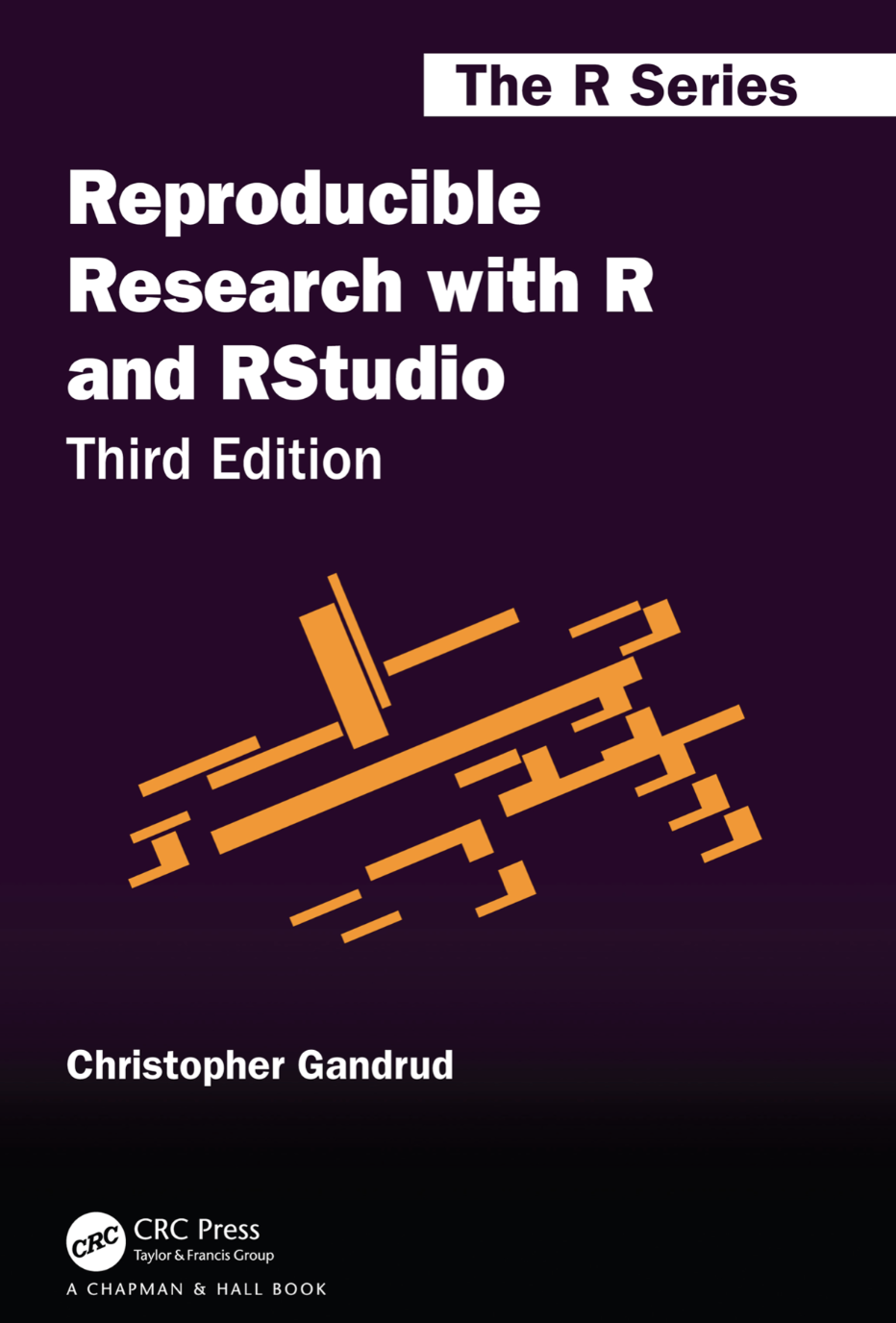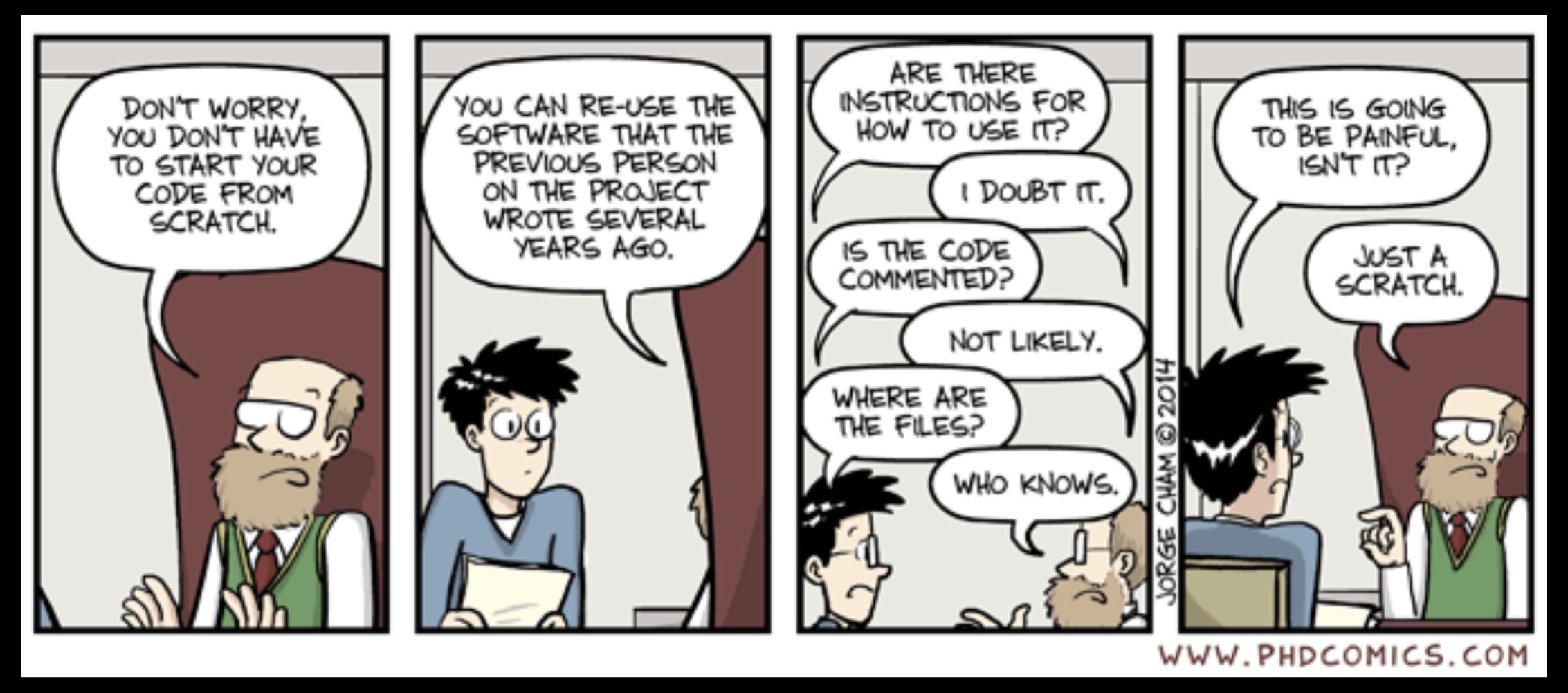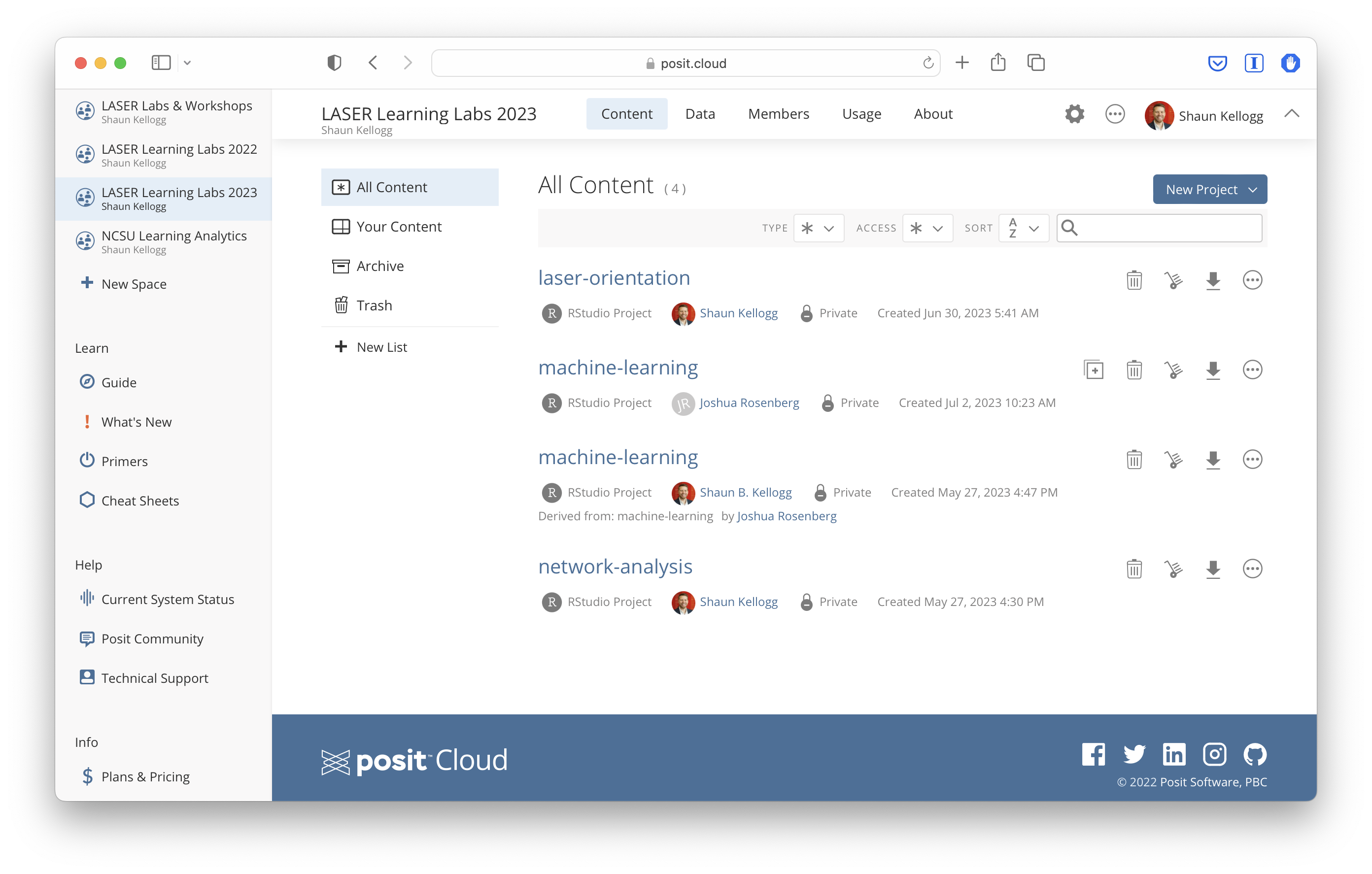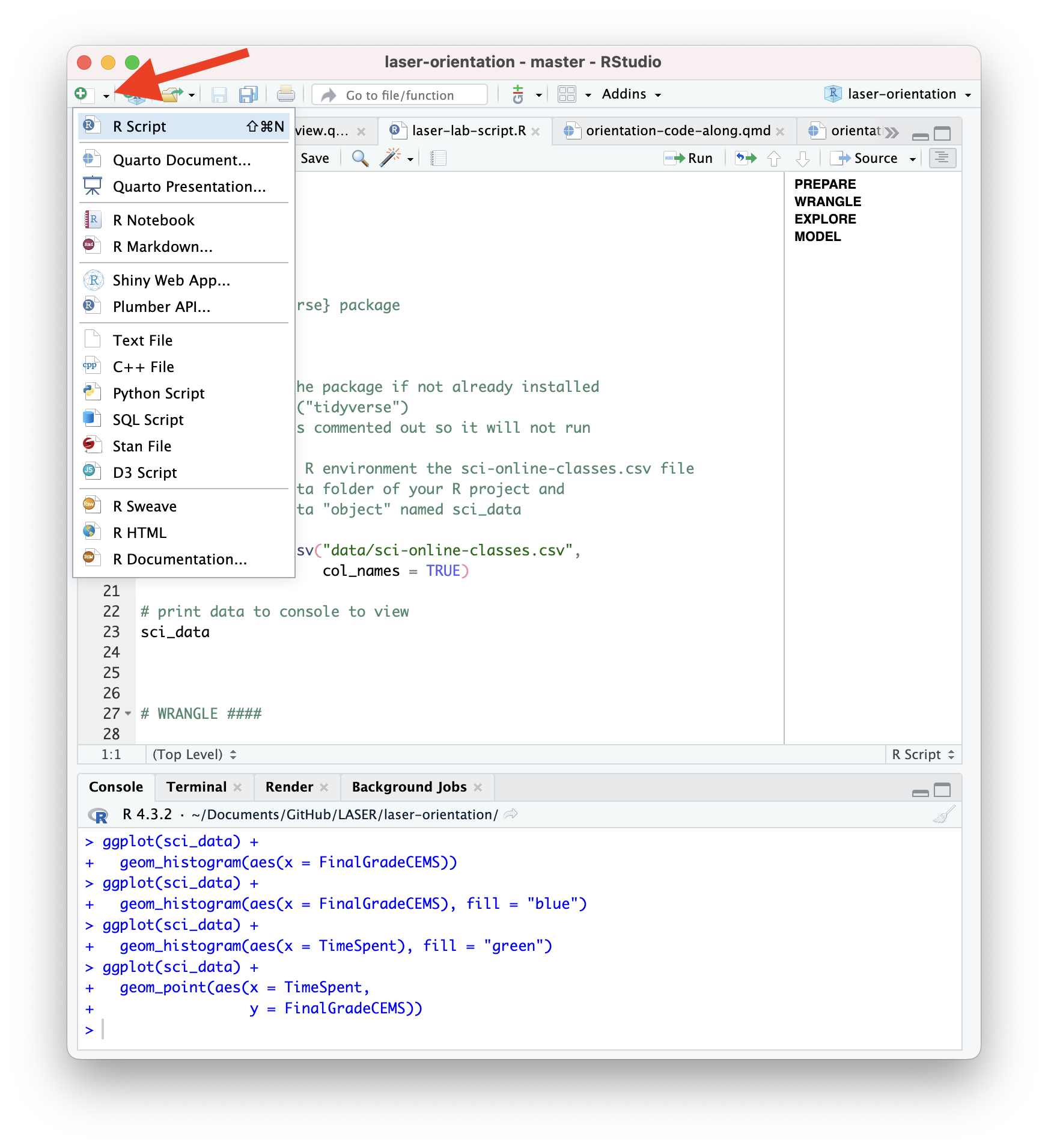The LASER Toolkit & Reproducible Research
LASER Orientation Module: Conceptual Overview
Overview
Reproducible Research
Definition
Benefits
Pain Points
Best Practices
Discussion
The LASER Toolkit
GitHub
Posit Cloud
RStudio
Quarto
R & Python
What is Reproducible Research?
In computational sciences like LA:
Ideally… researchers can replicate your findings by following the procedures used to gather the data and run the computer code.
Realistically… the data and code used to make a finding are available and sufficient to reproduce the analysis.

The Benefits of Reproducible Research
For Science:
Standard to judge scientific claims
Enhances replicability
Avoiding effort duplication
Cumulative knowledge development
For Yourself:
Better work habits
Better teamwork
Changes are easier
Higher impact research
Reproducible Research?

Discussion
Think about the following questions and then discuss at your table:
What have your experiences been with reproducible research?
What tools have you used to ensure the reproducibility of your work?
What questions do you have about reproducible research?
Best Practices for Reproducible Research
Document everything!
Everything is a (text) file.
All files should be “human readable.”
Explicitly tie your files together.
Have a plan to organize, store, and make your files available.
To learn more: Reproducible research with R and R studio (3rd Edition). CRC Press.
The LASER Toolkit
GitHub, Posit, RStudio, Quarto, and R & Python
Tool Types
Reproducible research involves two broad sets of tools:
A Reproducible Research Environment, that includes the statistical tools you need to run your analyses; automatically track the provenance of data, analyses, and results; and to package them for redistribution”.
A Reproducible Research Publisher that prepares dynamic documents for presenting results and is easily linked to the reproducible research environment.
GitHub
The LASER Institute GitHub site houses repositories for all curriculum materials and GitHub Pages is used to publish our site to the web.
GitHub is a web-based platform used for version control, collaboration, and sharing of a project’s code, documents, and other related files.
Posit Cloud
Posit Cloud lets you access Posit’s powerful set of data science tools like RStudio IDE and Jupyter Notebooks right in your browser.
Interactive components for each module (e.g., Case Studies and Code-Alongs) are accessed and complete in our LASER Learners workspace.
RStudio
RStudio is an integrated development environment (IDE) for R and Python and includes:
a Console for running R code directly,
syntax-highlighting editor that supports direct code execution in the Source pane,
tools for plotting, history, debugging, and management of research projects in the Environment and Files panes.

Quarto
R & Python
Essential Readings
Chapters 1 and 2 of Reproducible Research with R and RStudio by Gandrud (2021) lay the groundwork for understanding and implementing reproducible research:
Chapter 1: Introducing Reproducible Research
Chapter 2: Getting Started with Reproducible Research
Questions for reflection and discussion are also included in our Essential Readings document. Responses can be posted to our laser-orientation channelon Slack.
Acknowledgements

This work was supported by the National Science Foundation grants DRL-2025090 and DRL-2321128 (ECR:BCSER). Any opinions, findings, and conclusions expressed in this material are those of the authors and do not necessarily reflect the views of the National Science Foundation.




